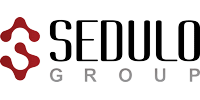
Think of competitive intelligence research as a systematic, data-driven approach to gathering and translating market information into actionable insights. It’s not a clandestine or underhanded practice; rather, it’s about strategically utilizing information to understand the strengths, vulnerabilities, and potential growth strategies of your competition.
Your Comprehensive Guide to Competitive Intelligence Research
1. Define Your Strategic Purpose
Before embarking on your research, define the specific goals and actionable outcomes you seek. Consider questions like:
- Are you seeking to understand specific competitor customer acquisition strategies to enhance your own?
- Do you want to benchmark your pricing models against those of market leaders?
- Are you aiming to uncover underserved market segments or potential areas for innovative disruption?
- Would understanding a potential competitor’s future expansion plans aid in proactive strategy development?
2. Establish Competitor Segmentation
A clear understanding of who you’re facing is foundational for meaningful competitive intelligence. Map the various entities vying for your target market’s attention:
- Direct Competitors: Companies offering products/services that directly compete with yours.
- Indirect Competitors: Those who may offer alternative solutions but ultimately target the same audience.
- Substitute Competitors: Businesses offering significantly different products or services but that serve the same customer needs.
- Potential Entrants: New or emerging companies are likely to disrupt the market soon.
3. Assemble Your Digital Toolkit
Optimize your research efficiency with powerful technology:
- Social Listening Platforms: Uncover valuable mentions of competitors (and your own brand), track customer sentiment, and stay ahead of trending topics.
- Web Analytics Tools: Delve into competitor website traffic and performance, gaining insights into their content strategies, lead generation approaches, and potential SEO best practices.
- Website Monitoring Tools: In addition to tracking traffic and keywords, monitor the actual content of competitive websites for insights into product or positioning changes.
- Search Engine Analysis: Employ tools to understand competitor search rankings, target keywords, and backlink strategy to gauge their strengths in organic search visibility.
4. Unearth Insights from Public Data
Competitors leave an extensive digital footprint. Analyze it carefully:
- Their Website: Scrutinize product and service descriptions, ‘About’ pages, customer testimonials, and blog content. Identify pain points they address, their overall value proposition, and potential strengths you could leverage.
- Press Releases & News: Uncover announcements about new products, strategic partnerships, market expansion, or other upcoming initiatives.
- Financial Reports: (For publicly traded companies) Analyze earnings calls, annual reports, and investor communication to pinpoint strategic objectives, R&D spending, and their financial health.
- Social Media Channels: Follow discussions, hashtags, and engagement. Track customer sentiment, competitor interactions, marketing campaigns, and potential issues affecting customer satisfaction.
5. Expand Your Perspectives
Consider these methods to add nuance and depth to your intelligence:
- Customer Sentiment Analysis: Analyze competitor reviews, online forums, and customer satisfaction surveys to pinpoint service pain points or unmet needs.
- Customer Interviews: Talk to your own customers about their past experiences with your competitors. Use the opportunity to address weaknesses and emphasize your advantages.
- Industry Experts: Consult with industry analysts, advisors, and thought leaders to understand competitor strengths and weaknesses in the broader market context.
- Ethical Insights: Consider approaching current or former employees of competing companies, always prioritizing ethical sourcing and ensuring respect for individuals.
6. Knowledge to Action: The Heart of Competitive Intelligence Research
Competitive intelligence only achieves its purpose when used as a foundation for informed strategy. Apply your insights to:
- Enhance Product/Service Offerings: Develop or refine product features to address customer needs competitors fail to meet. Create solutions that position you as the innovative, high-value choice.
- Refine Pricing Strategy: Optimize your pricing approach by considering competitor tactics, the perceived value of your offerings, and overall market conditions.
- Boost Marketing Effectiveness: Develop targeted messaging and outreach strategies that cut through the noise. Highlight your advantages and address any competitor weaknesses identified.
- Predict and Plan: Look for patterns or signals that may hint at future competitor moves. Use this to create flexible strategies that ensure you’re positioned to adapt and excel, leaving your competitors scrambling.
7. Adaptability is Key
In dynamic markets, the status quo rarely lasts long. Competitive intelligence research must be an ongoing process:
- Periodic Updates: Maintain regular updates to your competitor analysis to stay informed about their changing strategies, initiatives, and customer feedback.
- Evolving Metrics: Monitor new market trends, new players entering the industry, and shift focus or expand your research focus as needed.
- Strategic Collaboration: Share your insights with key stakeholders across sales, marketing, and product development. Align the organization to take advantage of competitive intelligence.
Competitive Intelligence as Your Strategic Edge
Competitive intelligence research allows you to make data-driven decisions with greater confidence. You’ll benefit from:
- Informed Proactivity: Identify potential competitor moves before they materialize, empowering you to counter, disrupt, and seize opportunities ahead of the competition.
- Strategic Focus: Tailor new services, product improvements, and targeted marketing campaigns with precision, minimizing blind spots and focusing resources effectively.
- Innovation Catalyst: Analyze competitor offerings to gain inspiration, spot areas for significant disruption, and position yourself as a market leader.
- Enhanced Risk Mitigation: Uncover potential threats or areas your competitors may exploit to identify strategic vulnerabilities and minimize future risks.
Partner with the Competitive Intelligence Research Experts
Sedulo Group, your trusted competitive intelligence research partner, delivers a full suite of customized research services. Through comprehensive primary and secondary research, we delve into competitor offerings, messaging strategies, market positioning, and more. Contact Us to uncover how we can empower your organization with unmatched competitive insights.
